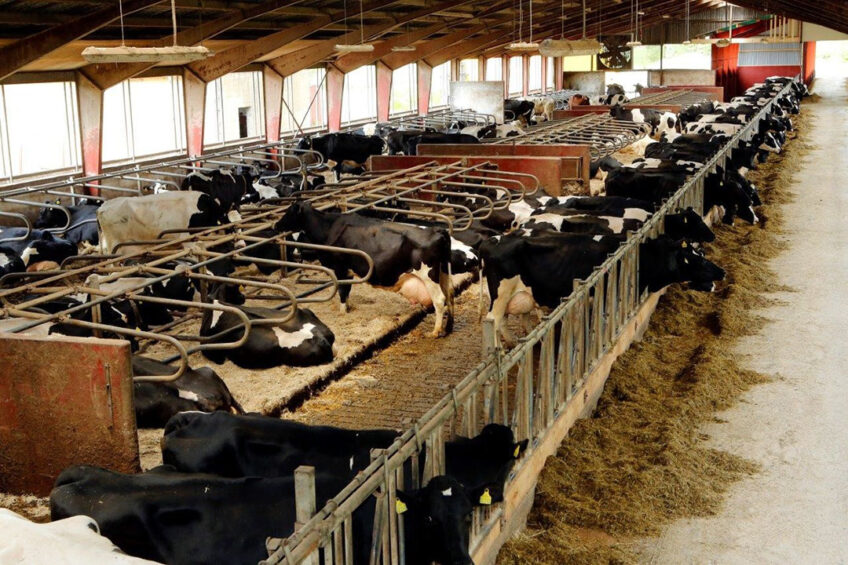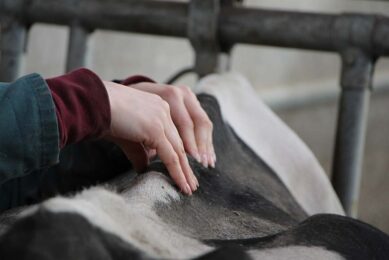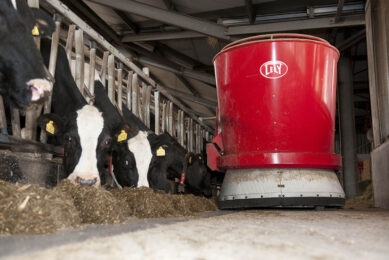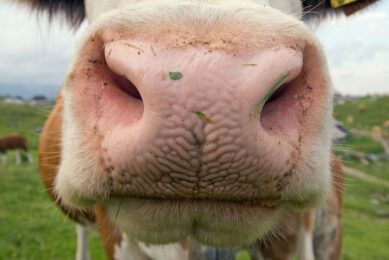Do you know what your cows are telling you?

Cows are constantly giving us signals about their health and productivity. Learn how sensors can help us understand these signals.
Cows have busy days. They need to have enough time for feeding, ruminating and lying. And then there is the time required for milking, treatments and other management activities. All and all this means that cows run a tight schedule. Deviations from this schedule can have a serious impact on the herd’s profitability.

Optimal time budgets
Dairy cows in freestalls spend 4 to 6 hours eating, consuming 9 to 14 meals per day. In addition, they ruminate about 10 hours and require approximately 12 to 14 hours of lying in 11 lying bouts. That leaves at most 3 hours per day for other behaviour, including management activities. Note that rumination and lying time are overlapping a bit. In total, cows spend around 16 hours on rumination and lying combined. This means 7 hours of ruminating while lying, 3 hours of ruminating while standing and 6 hours of lying without rumination (Figure 1). And remember, it is the last cow leaving the parlour that determines the time away for milking for the entire pen! Keeping cows comfortable means allowing them to budget their time naturally. This results in less stress and better productivity. Managing a freestall system successfully means ensuring that cows get the time they need to be cows. This means respecting these time budgets. Canadian research has shown that greater feed intake, as well as milk production, are more consistently associated with cows spending more time at the bunk, with more frequent, smaller meals (compared to eating larger, faster meals). This type of eating pattern is not only good for production, but also for rumen health and efficiency.
Figure 1 – Lying and rumination are overlapping each other.

The latest generations of sensors, like Nedap Smarttags, can monitor the time budgets 24/7 for individual cows, pens and your entire herd. And it is not just the milking herd, the dry cows are included as well. This gives you the opportunity to check the effects of your management style or changes. It is good to realise that you need to know as many of these traits for as many cow groups as possible. If, for instance, only rumination time is available for fresh cows you only get a small part of the picture. Adding eating time and dry cows means a huge improvement and really gives you options for improving the profitability of your herd.

Dry cows
Cows are ruminants and this means they need to spend enough time chewing (eating and ruminating). It is the total chewing time that is important. A reduced rumination time in itself does not necessary indicate a problem. It might simply be the result of a change in diet. The most obvious example is pasture access. This results in a dramatic change in eating and rumination time compared to silage, but the total chewing time remains constant. When the total chewing time is reduced, that’s when your cows run into trouble. This has been shown for ketosis. Ketotic cows have around 5% decrease in chewing time in the entire dry period. This only emphasises the need to know both eating and rumination time. And you need to know it for the dry cows. It might not be the first group you think of, but you really should. Good dry cow management is essential for a good start of the new lactation. Eating time and lying time in the dry period are related to production at the first test day. Top producing cows spend more time eating and more time lying in the entire dry period (Figure 2).
Your turn
Every herd is different and even pens within a herd are different. Positive changes in one herd might not work in another herd. The key is to quickly know if a change in your management is working out as expected. With the latest generation of sensors you now have the opportunity to get insights in the time budgets of your cows. So, now it is your turn: How could you, as a dairy farmer, use this to improve the profitability of your farm?
This is part 2 of a 4 part series on how sensors are making their way to dairy farms around the world and the practical application of it. Read part 1 here.
Join 13,000+ subscribers
Subscribe to our newsletter to stay updated about all the need-to-know content in the dairy sector, two times a week.










